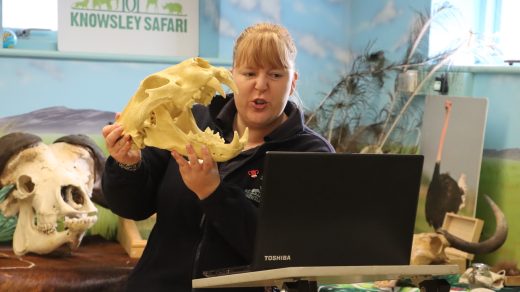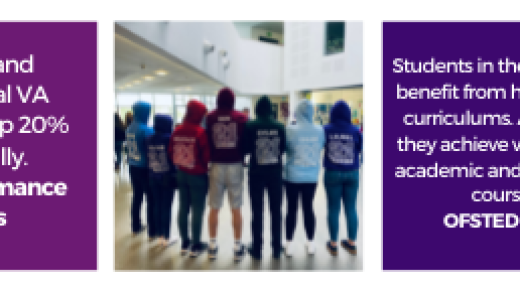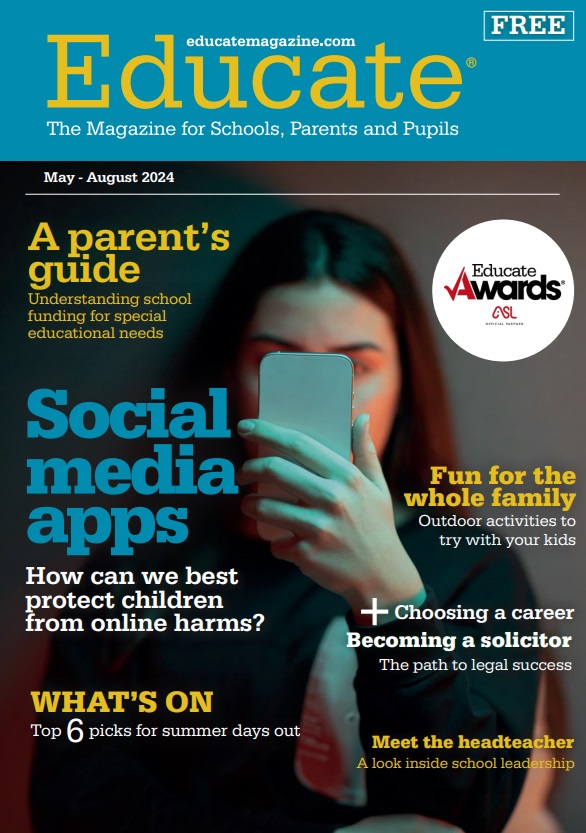‘Vulnerable children have never been out of our sight – and the COVID-19 crisis has built further trust between us’

by Debra Seekings, partnership director for special education needs and inclusion at The GORSE Academies Trust.
I began my new post at The GORSE Academies Trust in Leeds in March. The national lockdown started a few days later. Given the nature of my work and the significant social deprivation of so many of the children and young people educated in the Trust’s 11 inner-city schools, I had expected to be busy. But it wasn’t quite the start I had planned.
When schools closed to all but children of key workers and vulnerable students nine months ago, we operated a ‘hub’ model and had low attendance among the latter group across all our academies. Despite our encouragement, many families felt their children were safer at home; the message of “stay at home, protect the NHS, save lives” was certainly hugely effective.
Amanda Spielman, Ofsted’s Chief Inspector, has said that these children were ‘out of sight’ from schools. Not for us, and not for other schools. We were absolutely committed to ensuring we kept our most vulnerable students and families safe from any harm.

I am exceptionally proud that we not only achieved this but have, in the process, built a new level of trust between us and our families and their children. Our attendance figures in December, when schools were fully open, underlined that; and so, does the position now, with schools only open again to a small group of students, including, again, those classed as vulnerable.
The work we have done over the last 10 months has stood us in good stead for now, especially given that, across the trust, we currently have a much higher uptake of places for vulnerable learners and children of key learners compared to the previous national lockdown. Pupils ineligible for a school place are monitored closely to ensure engagement in remote learning with a specific focus on students with SEND. Pastoral structures are in place to provide ongoing family and safeguarding support as previously.
Back in March, we immediately looked at all our students and families and placed them in tiers by how vulnerable we considered them, working with the respective designated safeguarding leads across the Trust who knew them best. Those for whom we had significant ongoing concerns and were known to children’s social services were in Tier 1. Tier 4 was for those considered vulnerable but for whom we had no current specific concerns.
The team of senior leaders and safeguarding leads drew up a protocol of how we would keep in touch with each identified group. For the most vulnerable, if they were not attending school, we would call them and their parents, carers or guardians twice a week to check in, using a prepared welfare script and working off a checklist, to ensure we had as close an eye on them as possible – always remaining vigilant to any safeguarding concerns. Teachers also maintained contact in a variety of ways with all students, checking on wellbeing, engagement with school work and making sure students were able to access remote learning.
There was a clear escalation process. If a call wasn’t answered, or we weren’t satisfied after a call, then home visits would be sanctioned. If we had had any serious concerns, our process was to refer to children’s social work services immediately. The centralised encrypted database we had set up could be edited in real time so as soon as a call happened, the notes were logged and updated, and everyone on the team could see the current position with every child in each tier.

Our umbrella of support extended into the Easter holidays. We maintained the same level of contact and also paid for and delivered food vouchers for all of our families who would normally have had free school meals.
Families, who had always been encouraged to get in touch with us at any time, started to do so more often and were proactive in asking for help and advice. Families’ trust in academy leaders providing a COVID safe school environment grew and attendance increased.
We trained 30 additional designated safeguarding leads to build additional capacity to continue the established level of support over the summer holidays and beyond as we prepared for the wider opening of schools. This specialist training is vital and supports staff in the identification of signs and indicators of abuse, and although we already had safeguarding experts and pastoral staff in all our schools, we wanted to have capacity to continue with our established safeguarding and welfare calls over the summer holidays.
Between March and the full re-opening of schools in September, we were proactive in the early identification of safeguarding concerns and were able to signpost to external agency support, make any necessary referrals and put into place relevant early help and intervention. The safeguarding and wellbeing checks we put into place undoubtedly provided a safety net for our students and their families and enabled us to keep in close contact with social workers. We also have the advantage that our schools cover a fairly small geographic area, which meant that our ‘hubs’ were close to one another and cohesive.
By December when we were in Tier 3 in Leeds, attendance at all our schools was comparable to pre-pandemic rates. Our young people felt safe in school, were motivated and wanted to learn. I am sure that this was above all because they and their families trusted us to keep them safe and provide an outstanding educational offer. Like other schools, we have rigorous COVID-19 security, robust health and safety processes, established remote learning protocols, a culture of safeguarding and we are always proactive in changing how we do things to stay one step ahead. We listen strongly to what our students say, and we respond to how they feel. We have very strong pastoral, wellbeing and robust mental health support in every school, and dedicated, in-house counselling services are available to students in need of them.

Families would have chosen to keep their children at home if they weren’t reassured. Nationally, there has been a dramatic increase in students being electively home educated compared to last year. The Association of Directors of Children’s Services estimate that the number of children withdrawn from school has soared by 38%, and the most common reason cited by parents for home educating their children is due to health reasons directly related to COVID-19. Since September, the number of students withdrawn for elective home-education equates to 0.2% of our school population. Alongside our attendance figures, I believe this is a true measure of what we have achieved for our children.




